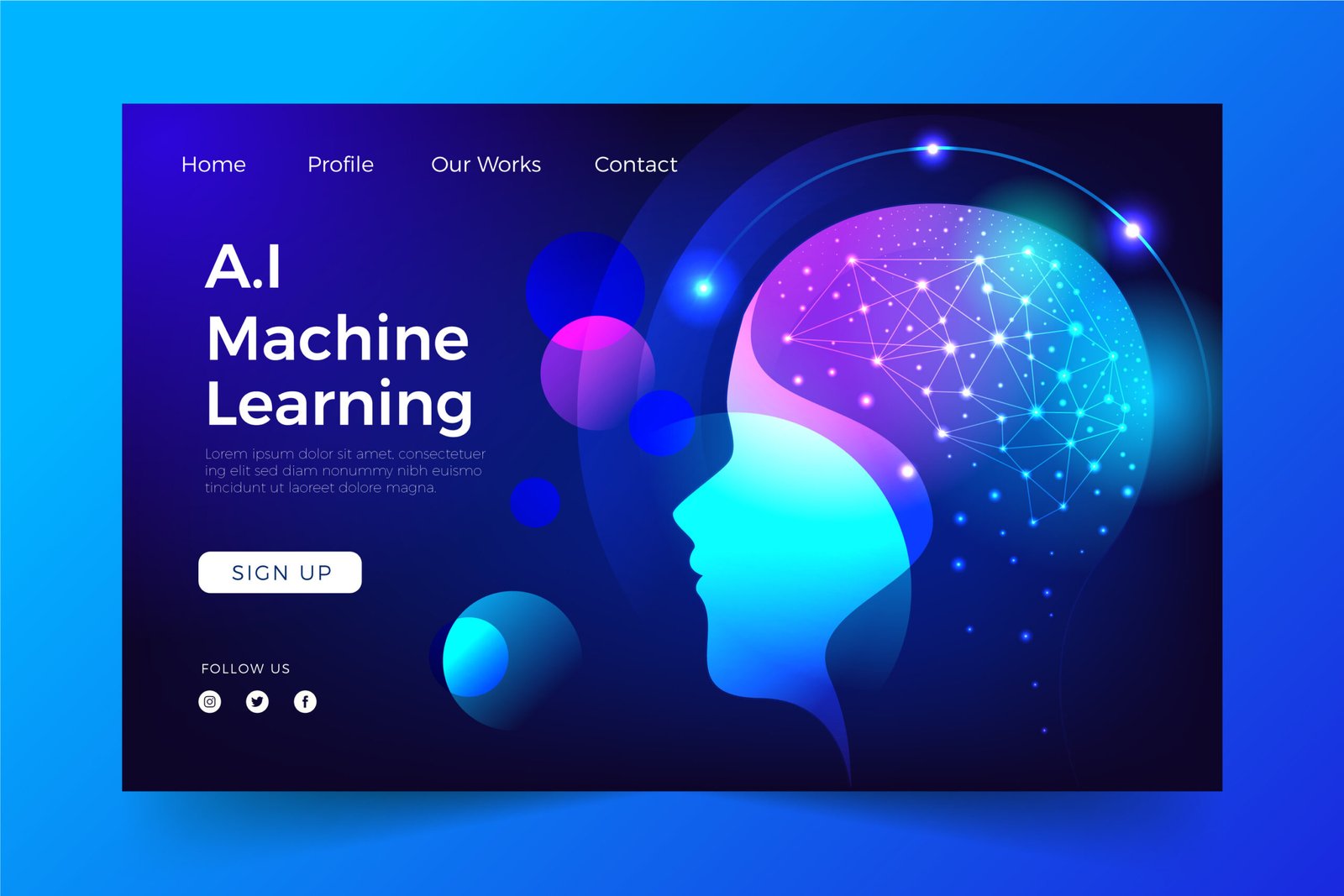Table of Contents
- Introduction to Data Analytics in B2B Marketing
- Understanding Your Audience Through Data Analytics
- Optimizing Content Marketing with Data Insights
- Enhancing Lead Generation Strategies via Data Analytics
- Personalizing Customer Experiences with Predictive Analytics
- Measuring and Analyzing Marketing Campaign Performance
- Leveraging Data Analytics for Competitive Advantage
- Implementing Data-Driven Decision Making
- Conclusion: The Future of B2B Marketing and Data Analytics
Introduction to Data Analytics in B2B Marketing
In the digital era, data analytics has emerged as a pivotal tool in shaping marketing strategies, especially within the realm of B2B marketing. The vast amount of data generated daily has created numerous opportunities for organizations to gain insights that were previously unattainable. By leveraging data analytics, businesses can deep dive into consumer behavior, market trends, and campaign performance, facilitating more informed decision-making processes.
Data analytics in B2B marketing can be characterized by its ability to analyze customer preferences, identify segmentation patterns, and predict future behaviors. This process involves collecting data from various sources, such as customer interactions, social media engagement, and sales performance. With these insights, companies can tailor their marketing strategies to meet the specific needs and expectations of their target audience.
Moreover, data analytics plays a crucial role in measuring and optimizing the return on investment (ROI) on marketing efforts. By quantifying campaign performance through metrics and KPIs, businesses can identify successful strategies while also pinpointing areas that require adjustment or improvement. This real-time analysis fosters agility, enabling marketers to respond promptly to changing market dynamics and consumer preferences.
As the B2B landscape continues to evolve, the importance of data analytics cannot be overstated. Businesses that incorporate data-driven approaches into their marketing strategies are better equipped to achieve their objectives and maintain competitive advantages. This increasing reliance on analytics emphasizes the need for innovative tactics that harness data effectively. As we explore the specific methods to leverage data analytics, it will become evident that such practices are not only beneficial but essential for driving success in B2B marketing.
Understanding Your Audience Through Data Analytics
In the rapidly evolving landscape of B2B marketing, understanding your audience is paramount. Data analytics serves as a powerful tool that enables businesses to gain valuable insights into their target demographics. By leveraging various data analytics methodologies, organizations can effectively segment their audiences, create detailed customer profiles, and track consumer behavior, thereby attaining a deeper comprehension of customer needs and preferences.
Segmentation analysis is one of the fundamental approaches employed in data analytics. It involves dividing a broader audience into distinct groups based on shared characteristics such as demographics, purchasing behavior, or preferences. By categorizing an audience in this manner, businesses can tailor their marketing strategies to meet the specific requirements of each segment. This targeted approach not only enhances engagement but also increases the chances of conversion by ensuring that the right message reaches the right individuals.
Customer profiling goes hand in hand with segmentation analysis. This process involves collecting and analyzing data to create comprehensive profiles of potential clients. By examining factors such as past purchases, online behavior, and engagement patterns, businesses can better understand what drives their customers’ decisions. With accurate customer profiles, companies are better positioned to craft personalized marketing communications that resonate with their target audience, enhancing relevance and effectiveness.
Behavior tracking is another critical aspect of utilizing data analytics. By monitoring how customers interact with digital platforms, businesses can uncover insights into what content captivates their audience’s attention. Tracking metrics such as website visits, time spent on pages, and interaction rates allows marketers to refine their strategies and optimize content delivery. Armed with this data, companies can create personalized experiences that cater to customer interests, ultimately fostering brand loyalty and advocacy.
In summary, utilizing data analytics to understand your audience not only streamlines B2B marketing efforts but also ensures that businesses can adapt to changing customer needs. By implementing segmentation analysis, customer profiling, and behavior tracking, organizations can create a bespoke marketing experience that drives engagement and success.
Optimizing Content Marketing with Data Insights
In the contemporary landscape of B2B marketing, the significance of data analytics in optimizing content marketing efforts cannot be overstated. By leveraging data insights, businesses can effectively tailor their content strategies to align with audience preferences, ensuring that their messaging resonates with the intended demographic. Data analytics offers a multitude of tools and metrics that can streamline the process of evaluating content performance, audience engagement, and emerging topic trends.
One of the primary tools for analyzing content performance is web analytics software, which provides critical insights into how users interact with content on a website. Metrics such as page views, time spent on page, and bounce rates are vital indicators of audience engagement. For instance, high page views coupled with a low bounce rate often suggest that the content is not only attracting visitors but also holding their interest. By understanding these metrics, marketers can identify which types of content are performing well and which require optimization.
In addition to web analytics, sentiment analysis tools can provide insights into how audiences perceive content across various platforms. By analyzing feedback, comments, and shares, organizations can gauge the emotional response of users to specific topics or themes. This understanding allows marketers to pivot their content strategies quickly in response to audience preferences.

Moreover, utilizing tools like social media analytics and keyword research can help identify trending topics within the industry. By balancing evergreen content with timely subjects, businesses can enhance their relevance and engagement levels. These data-driven insights empower teams to produce more effective content that not only captures attention but also drives conversions.
By systematically utilizing data analytics, B2B marketers can create content that is both relevant and effective, reinforcing the need to adapt and evolve strategies based on empirically derived insights.
Enhancing Lead Generation Strategies via Data Analytics
In the realm of B2B marketing, enhancing lead generation strategies through data analytics serves as a paramount advantage. The process begins with the meticulous tracking of lead sources. Utilizing customer relationship management (CRM) systems and analytical tools, organizations can accurately monitor which channels yield the most promising leads. By conducting a thorough analysis of these sources, businesses can allocate resources more efficiently, concentrating on those that generate high-quality prospects.
Furthermore, conversion rates play a crucial role in refining lead generation tactics. Data analytics enables marketers to dissect conversion metrics, allowing for an understanding of where potential customers drop off in the sales funnel. By identifying these critical points, businesses can implement targeted interventions, such as personalized content or tailored outreach, designed to engage leads more effectively and encourage progression towards final purchase decisions.
Another variable to consider is the customer journey analytics. By scrutinizing how leads interact with the business at various stages, organizations can identify patterns and preferences that inform future marketing strategies. Analytics tools can clarify the various paths customers take and highlight the touchpoints that are most influential in their decision-making processes. This insight allows for the creation of customized experiences that resonate deeply with potential clients.
Moreover, segmentation of leads based on behavior, demographics, and engagement history can significantly enhance targeting efforts. Data analytics provides the framework to create detailed profiles of prospective buyers, facilitating targeted marketing campaigns that speak directly to their needs and interests. Ultimately, these actionable strategies, underscored by robust data analytics, lead to improved lead quality and a marked increase in sales conversions, optimizing the overall effectiveness of B2B marketing initiatives.
Personalizing Customer Experiences with Predictive Analytics
Predictive analytics is a branch of data analytics that utilizes statistical algorithms and machine learning techniques to analyze historical data and predict future trends. In the context of B2B marketing, predictive analytics can play a crucial role in personalizing customer experiences by addressing their specific needs and preferences. By leveraging data from various sources such as purchasing history, website interactions, and social media activity, businesses can gain insights that facilitate more targeted and relevant marketing strategies.
One of the practical applications of predictive analytics in B2B marketing is the development of personalized marketing campaigns. By analyzing past behaviors, companies can segment their audiences into distinct groups, allowing for tailored messaging that resonates more profoundly with each segment. For instance, if data indicates that a specific customer segment is more likely to respond to email offers during particular times, marketers can time their campaigns accordingly. This not only improves engagement but also increases the likelihood of conversion, as customers feel that the communication is specifically designed for them.
Another valuable application of predictive analytics lies in the realm of product recommendations. By predicting which products or services are most relevant to specific customers based on their previous interactions and preferences, businesses can customize their offerings to enhance satisfaction. For example, a software provider could suggest relevant add-ons or upgrades based on a user’s current product usage. Such personalized recommendations not only enhance user experience but also foster customer loyalty as clients appreciate the efforts taken to meet their unique needs.
As businesses strive to improve customer satisfaction and loyalty, predictive analytics emerges as a vital tool, enabling them to refine their marketing approaches and develop a deeper understanding of their clientele. Utilizing predictive models can ultimately transform how B2B companies engage with customers and drive revenue growth in an increasingly competitive landscape.
Measuring and Analyzing Marketing Campaign Performance
In the realm of B2B marketing, measuring and analyzing the performance of marketing campaigns is pivotal for ensuring that resources are allocated efficiently and that strategic objectives are met. Data analytics plays a crucial role in this process by enabling marketers to compile and interpret vast amounts of data to assess the effectiveness of their efforts. One of the primary methods to accomplish this is through the utilization of key performance indicators (KPIs).
KPIs, such as conversion rates, customer acquisition costs, and return on investment (ROI), provide valuable insight into how well a marketing campaign is performing. By setting specific KPIs before launching a campaign, marketers can create benchmarks that serve as a foundation for future analysis. For instance, tracking the number of leads generated from a particular campaign helps quantify its effectiveness, allowing for precise evaluations of marketing strategies.
Furthermore, analytics tools such as Google Analytics, HubSpot, or Tableau can facilitate the in-depth analysis of marketing campaign data. These tools offer comprehensive dashboards that can visualize performance metrics in real-time, making it easier for marketers to grasp complex data sets. By leveraging these tools, businesses are equipped to identify not only successful campaign elements but also areas requiring enhancement.
Interpreting the collected data is essential for making well-informed adjustments to ongoing or future campaigns. For example, if data indicates a low conversion rate, marketers can delve deeper into user behavior, identifying potential obstacles or inefficiencies in the conversion funnel. This analysis permits targeted refinements to enhance user experience and drive improved results.
Ultimately, an ongoing commitment to measuring and analyzing campaign performance using data analytics empowers B2B marketers to make informed decisions that cultivate effective marketing strategies and drive sustained growth.
Leveraging Data Analytics for Competitive Advantage
In the dynamic landscape of B2B marketing, businesses are increasingly leveraging data analytics to secure a competitive edge. The application of data analytics not only facilitates internal improvement but also empowers organizations to anticipate market changes and strategically position themselves ahead of competitors. One of the primary strategies is to conduct thorough competitive analysis through data-driven insights. By examining various metrics, companies can identify market trends and consumer behavior patterns that influence purchasing decisions.
To effectively analyze competitor performance, businesses can utilize tools that track metrics such as market share, customer satisfaction, and campaign effectiveness. This can reveal gaps in the market that competitors may not have fully addressed, allowing a business to capitalize on untapped opportunities. Furthermore, regular performance tracking of key industry players helps companies understand the competitive landscape, enabling them to adjust their strategies accordingly. By maintaining a keen awareness of competitors’ movements, businesses can react swiftly to changes and remain proactive in their marketing approaches.
Moreover, leveraging data analytics aids in effective strategic positioning. Once businesses have identified market trends and competitor performance, they can tailor their value propositions to better align with customer demands. This focused approach ensures that marketing efforts resonate with the target audience while distinguishing the business from competitors. By incorporating predictive analytics, organizations can also anticipate shifts in market dynamics, thereby formulating strategies that are responsive to emerging patterns. This foresight is essential in maintaining relevance and establishing a sustainable competitive advantage.
In conclusion, harnessing the potential of data analytics for competitive advantage in B2B marketing is crucial. Organizations that understand and implement these strategies will not only improve their internal processes but also strengthen their market position, ultimately driving sustained growth and success.
Implementing Data-Driven Decision Making
Data-Driven Decision Making (DDDM) is a pivotal concept in B2B marketing that enables organizations to make informed choices based on analyzed data rather than intuition alone. The ability to harness data insights is essential for fostering strategic advantages in a competitive market landscape. Implementing DDDM involves several crucial steps, beginning with the establishment of robust data collection processes. This entails identifying key performance indicators (KPIs) and leveraging various tools to collect, store, and manage data effectively from various sources such as customer interactions, market trends, and sales performance.

Once data is collected, the next step is to analyze it using various statistical and analytical techniques. Businesses can employ tools such as dashboards and data visualization software to facilitate deeper insights. Utilizing predictive analytics can also help businesses forecast future trends based on historical data, allowing for proactive adjustments to marketing strategies. To ensure the accuracy and reliability of data insights, organizations should regularly audit their data quality and adjust their collection methodologies as needed.
A crucial element in transitioning to a data-centric approach is cultivating a culture that values data within the organization. This involves training staff on the importance of data analytics and involving them in the decision-making process to encourage collaboration. Leadership should clearly communicate the vision for DDDM, providing necessary resources and support to empower employees. Additionally, addressing potential obstacles, such as resistance to change or lack of technical expertise, is vital. Encouraging open communication and offering continuous training opportunities can help mitigate such challenges.
Ultimately, by embedding data-driven practices within their marketing strategies, B2B organizations can achieve improved performance, informed decision-making, and enhanced competitive positioning. Embracing DDDM will enable businesses to respond effectively to market dynamics and customer preferences, paving the way for sustained growth and success.
Conclusion: The Future of B2B Marketing and Data Analytics
As we have explored throughout this blog post, the integration of data analytics into B2B marketing strategies is no longer optional; it is a necessity for organizations aiming to thrive in an increasingly competitive landscape. The key points discussed highlight how data analytics empowers businesses to make informed decisions, optimize their marketing efforts, and ultimately drive revenue growth. By understanding customer behavior and market trends, organizations can tailor their campaigns to meet specific needs, resulting in better engagement and conversion rates.
Looking ahead, the future of B2B marketing will be significantly influenced by ongoing advancements in data analytics. Emerging technologies such as artificial intelligence and machine learning are set to transform the way data is analyzed and utilized. These innovations will enable companies to uncover deeper insights from data, predict customer behaviors, and deliver personalized marketing messages at scale. It is anticipated that the ability to analyze data in real time will become a game-changer, allowing businesses to react swiftly to market changes and customer demands.
Furthermore, the growing emphasis on data privacy and ethical considerations will shape how organizations collect and utilize data analytics. Marketers must navigate these challenges while ensuring compliance with regulations, which will ultimately lead to more transparency and trust with their customers. This evolution signifies a shift towards responsible data usage, prioritizing consumer privacy while still harnessing the power of analytics.
In summary, leveraging data analytics forms a foundational aspect of successful B2B marketing. As businesses continue to embrace these methodologies and adapt to the ever-evolving technological landscape, those who prioritize data-driven strategies will position themselves for long-term success and sustainability in the market. The future is bright for B2B marketing that effectively harnesses the insights offered by data analytics.





